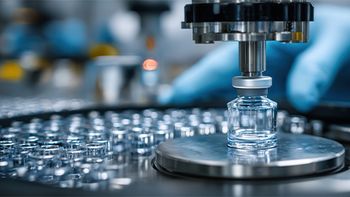
- Pharmaceutical Commerce - July/August 2017
Looking ahead in life sciences and healthcare logistics
New DHL report sees transformational trends
While R&D scientists and medical researchers are blazing new trails into areas like cellular therapy and genomics, the folks managing life sciences and healthcare supply chains are dealing with their own revolutions in patient care, new forms of drug delivery and new regulatory systems. Some of this thinking shows up in a new report from DHL, whose Life Sciences and Healthcare unit is the leading provider of global logistics services to the sector. There are six trends it highlights, and while the data behind the trend reporting is somewhat subjective, these trends should give pharma supply chain managers some guidance on what to expect from their logistics functions. The six are:
- Advancing data analytics (Big Data). By linking patient data across a spectrum of services, healthcare providers will be better able to predict demand and manage inventories. Big data tools are also helping to de-risk logistics processes.
- Increasing visibility through connectivity (Internet of Things). IoT technology is impacting materials management within health systems, and to monitor pharma shipments in transit and either respond to temperature and other environmental factors, or to minimize the introduction of counterfeit products.
- Healthcare on demand (On-Demand Delivery). “On demand,” by DHL’s thinking, includes the trend toward home-based patient care, with online pharmacies, point-of-care diagnostics and remote monitoring impacting healthcare delivery.
- Automating for speed and accuracy (Robotics and Automation). One effect of better and cheaper robotics is their increased use in logistics processes, such as packing shipments or managing warehouse inventories. DHL itself is investing in robotics at a variety of locations; in one intriguing instance, a robot handles a packaging and labeling function for tailoring injection pens to local markets, where demand is unpredictable. The result: lower inventories throughout the supply chain, and better demand management.
- Increasing efficiency with Augmented Reality. Another technology that, for DHL, could impact warehouse operations: DHL is experimenting with using augmented reality (data viewed through a small screen) to improve pick-and-pack operations.
- Leveraging Additive Manufacturing. Additive manufacturing scored one key breakthrough in 2016 when a 3D-printed drug was approved by FDA. In the near future, additive manufacturing will streamline production and inventory of medical devices (constructed to meet ongoing demand); it could also impact traditional batch manufacturing of pharma products.
In announcing the report, Scott Allison, president, life sciences and healthcare, DHL Customer Solutions & Innovation, said, “We are only just beginning to understand the huge changes the Life Sciences sector is facing in terms of how patients are diagnosed and treated, what new care challenges it faces, and the technology-driven tools to address them. DHL’s new report focuses on the transformation in the way medical products and services are produced, distributed and consumed. It is clear that logistic providers have a key role to play in this transformation to deliver healthcare to the world with cost-effective, agile and highly responsive supply chains.”
The report,
The Future of Life Sciences and Healthcare Logistics
, is downloadable at
Articles in this issue
over 8 years ago
Pharmaceutical traceability stumbles aheadover 8 years ago
Managing employee training at the enterprise levelover 8 years ago
Digital factory transformation beyond serialization complianceover 8 years ago
Blockchain: the technology to make DSCSA work after 2023?over 8 years ago
Besse Medical acquires Podisover 8 years ago
DHL opens a cold-chain center of excellence in Irelandover 8 years ago
Construction starts on a Pfizer biopharma plant near St. Louisover 8 years ago
Pharma’s cold chain is going below zeroNewsletter
Stay ahead in the life sciences industry with Pharmaceutical Commerce, the latest news, trends, and strategies in drug distribution, commercialization, and market access.




